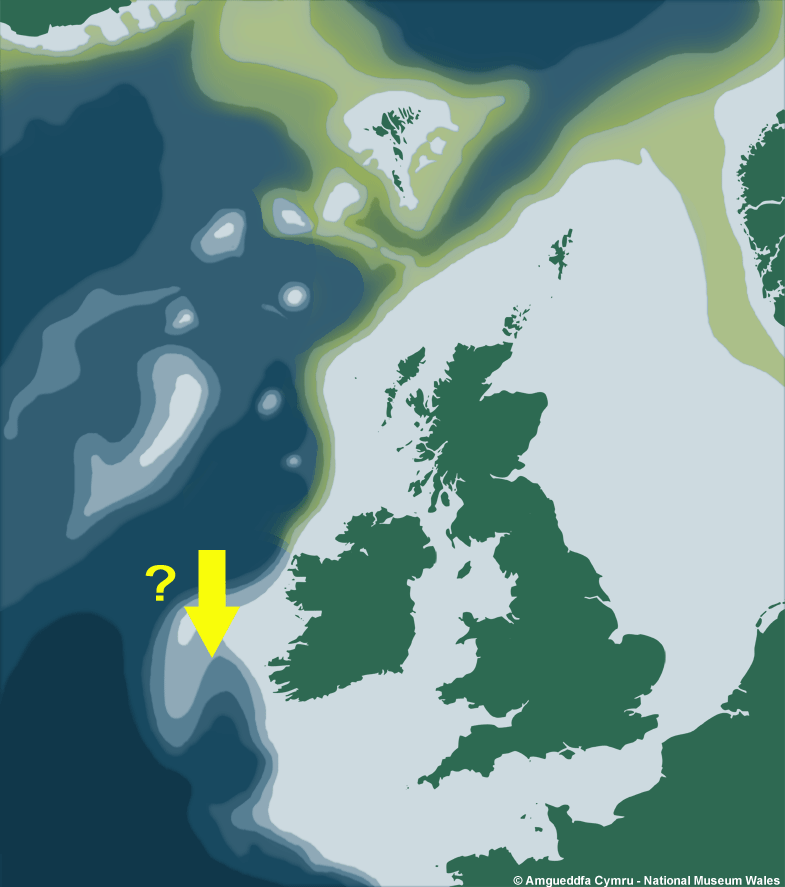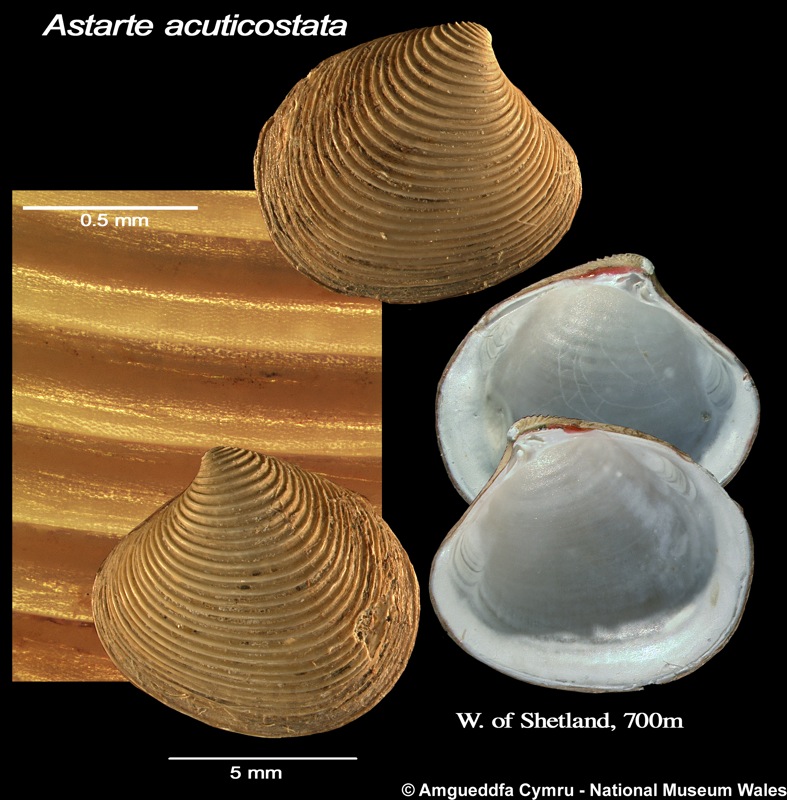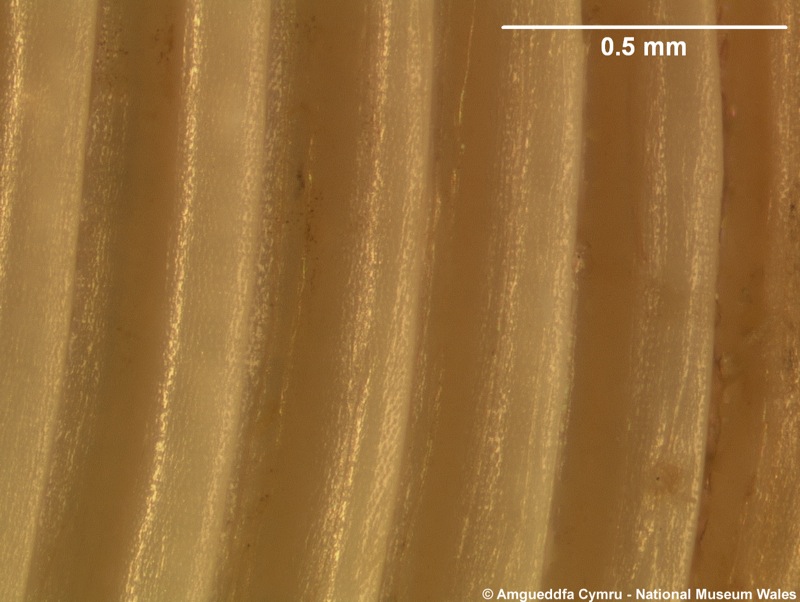Astarte acuticostata Friele, 1877
Crassatelloidea : Astartidae |
| Tebble name: | n/a |
| Smith & Heppell name: | Tridonta acuticostata (Jeffreys, 1869) |
To size: To 13mm. Shell Structure: Thin, brittle. Equivalve: Equivalve. Equilateral: Inequilateral, the beaks lie approximately 20% of dorsal margin length from anterior. Tumidity: Moderately tumid. Outline: Subtrigonal, anterior distinctly narrowed, height of shell just over 80% of the height. Posterior dorsal margin long, gently sloping, very slightly convex to almost straight; anterior dorsal margin more steeply sloping and conspicuously concave behind the umbo and then straight to the anterior end; anterior end slightly rounded; posterior end truncated/bluntly rounded; ventral margin almost straight; lunule distinct, slightly sunken, heart-shaped, relatively smooth with well defined, raised edges; escutcheon distinct, lanceolate, with very well defined raised edges. Beaks prosogyrous.
Sculpture: Narrow, fine, concentric ridges, cusped in a ventral direction, usually at least 35 in adult individuals. Margin: Smooth. Ligament: Broad, distinct but not prominently raised, runs for approximately one third the length of the escutcheon. Hinge: Heterodont: Robust hinge plate; right valve with 1 solid, relatively curved anterior cardinal tooth, and 1 thin and inconspicuous posterior tooth; left valve with 1 large blunt cardinal tooth, distinctly bifid such that it appears to be 2 teeth, and 1 thin and inconspicuous posterior tooth; the anterior part of the left valve has a long thickened ridge similar to a lateral tooth. Pallial Musculature: Entire. Periostracum: Ranges from yellowy gray to grayish brown. Silky surface texture, microscopically punctate. Colour: White.
Distribution & Ecology
Lives in silty sands on the upper and middle slope, in depths ranging from 400 to 900m.
Depth Range
Continental Margin Zone (200 - 500m)
Bathyal (500 - 2000m)

Additional Information & Related Species
Additional Comments
Related Species
Crassatelloidea : Astartidae
References
Listed are literature citing Astarte acuticostata Friele, 1877. Reference containing the species Type Description is highlighted.
|
Friele H 1877. Preliminary report on Mollusca from the Norwegian North Atlantic Expedition in 1876. Nyt Mag. naturvid. 23: 1-10. |
|
Høpner Petersen G. 2001. Studies on some Arctic and Baltic Astarte species (Bivalvia, Mollusca). Bioscience. 52: 1-71. |
Resources
- Conchological Society
of Great Britain & Ireland
Provides resources for understanding, identifying, recording, and conserving molluscs - CLEMAM
Check List of European Marine Mollusca - MarLIN
The Marine Life Information Network for Britain and Ireland (MarLIN) provides information for marine environmental management, protection and education. It is a centre of excellence in spatially based and time-series marine biological information and supports good stewardship in the marine environment. - NBN Gateway
National Biodiversity Network's Gateway. Use it to explore UK biodiversity data, as contributed by participating data providers. - BivAToL
- MarBEF
- Malacological Society
- Unitas Malacologica
- Census of Marine Life
- MarBEF
MarBEF, a network of excellence funded by the European Union and consisting of 94 European marine institutes, is a platform to integrate and disseminate knowledge and expertise on marine biodiversity, with links to researchers, industry, stakeholders and the general public.








